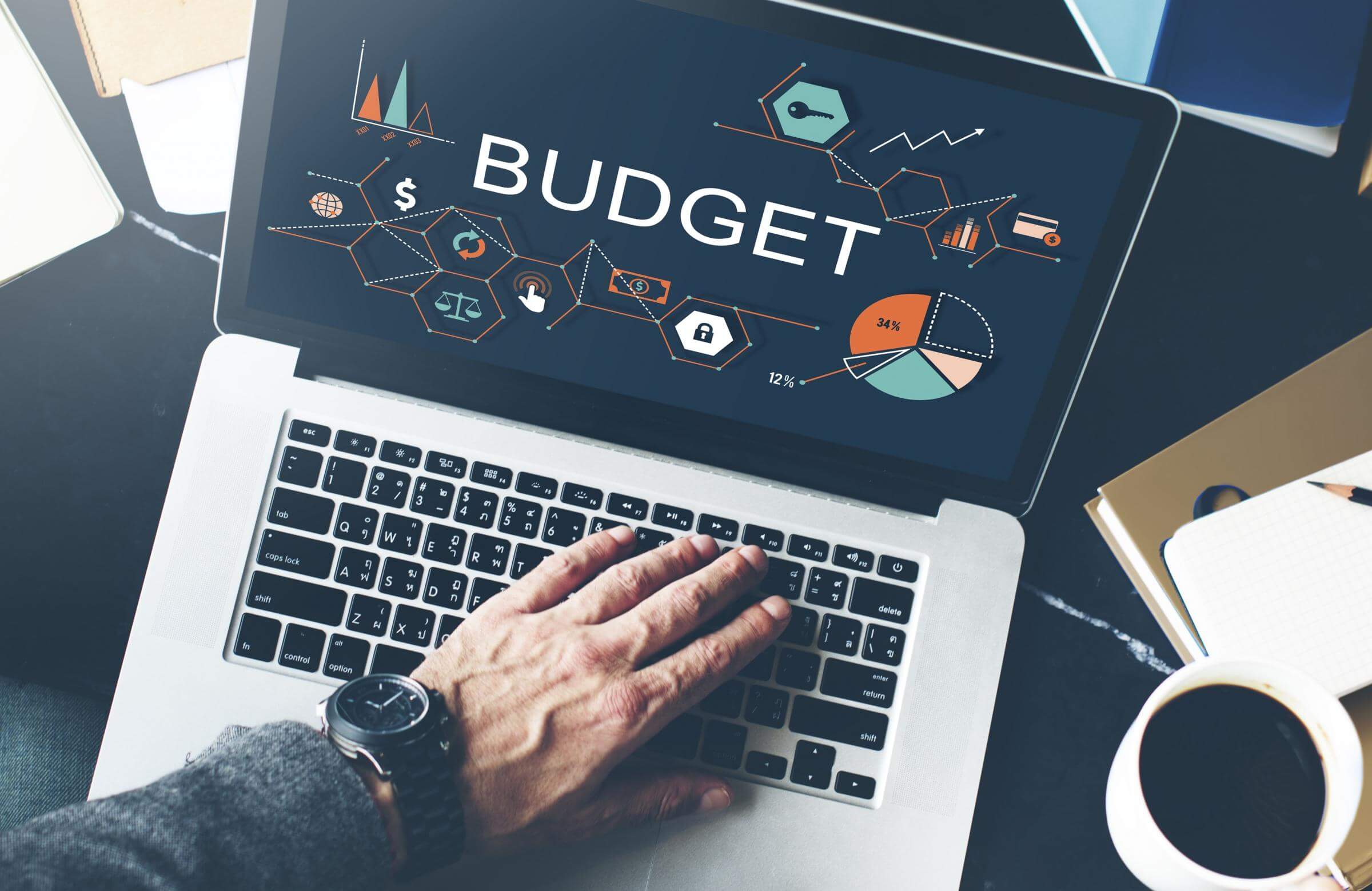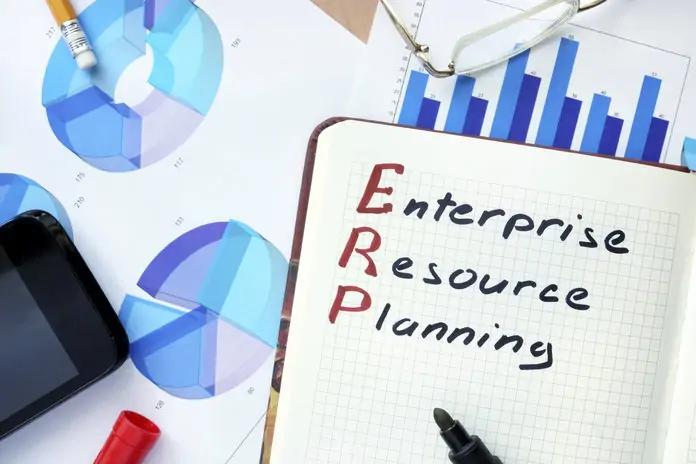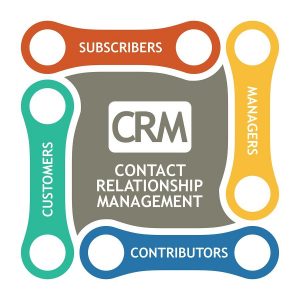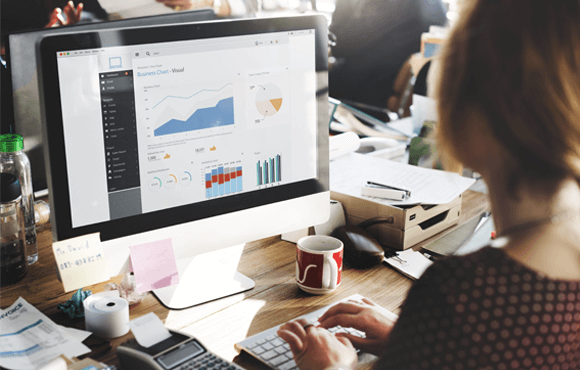The Covid-19 pandemic has prompted a wave of change in hotel operations that could possible alter various aspects of a guests’ experience, from how guests check-in to how services will be provided. It is vital for hotels to be able to understand guests’ concerns during the pandemic and be able to adapt to their needs in order to be sustainable in the long run. So what initiatives will hotels employ in order for the public to feel comfortable enough to stay there?
In an effort to achieve a truly contactless hotel experience, guests can look towards skipping the long lines when checking in at the hotel lobby, and instead going straight to checking in on their mobile phones. Queuing up in lines promotes contact with other patrons and may heighten the fear of viral spread, therefore hotels are stepping into the direction of creating a solution to the public’s worries by introducing this procedure. Now all guests simply have to do is download the hotel’s mobile check-in app, register their identification details, verify them simply by taking a snapshot of their identification cards or passports and finally, making payment in a contactless manner via their credit card. This not only allows for a safe check-in procedure, but it also minimizes the usual time spent checking-in and also having guests be able to do it absolutely anywhere, as long as they have their mobile devices with them.
With Clovatel’s online check-in app, guests have the ability to check into their rooms in a contactless manner, skipping the long queues at the lobby and going straight into their designated rooms. This ensures no contact between hotel staff and guests as well as practically no waiting time! Guests can expect to;
- Skip long lobby lines
- Check-In from anywhere via the Clovatel App
- Access their rooms with the in-app mobile key
- Order hotel services directly via the app
- Monitor room controls via the app such as lighting and air conditioning
- Streamline their room check-out process
It will definitely take some getting used to but by making these changes, guests can be rest assured of safety precautions taken place all whilst still enjoying the facilities of the hotel.
Hotel check-in systems have evolved in the last couple of years, improving and creating a much more desirable experience for guests. Patrons expect quick and seamless service and automation has proved to be the best solution. Adopting a solution that will support contactless and paperless is a safe approach that gives confidence to your guests during the trends of pandemic travel.
According to Hospitalitynet, 49% of direct online hotel bookings are now made via mobile. With the advancement of technology and everything being wireless, apps are making their way into a variety of businesses by being contactless. Mobile apps are not here to just streamline your operations process, but they will also help you to engage with your customers, build a loyal customer base, boost retention and overall generate more revenue for your business.
Contactless check-in allows for guests to be able to process pre-arrival check-in as similar as airline check-ins. This prepares hotels for the guest’ arrival and allows them to make the necessary requirements the guest may have. Every step that is needed from the front desk operations is now seamlessly processed by the guest themselves such as passport/ID scanning, facial recognition, payment and including if they require physical key cards or soft keys.
The guest simply has to arrives and validate their on-site presence for security clearance, receive their preferred room access methods, and be able to settle into their room quickly and in a safe way.
Some of the many advantages of having a Contactless App for your hotel include;
- Early check-ins
- Late check-outs
- Swap rooms
- Allow for room upgrades
- Add-on services for the room
- Control room air conditioning and lights
- Push promotions
What We Can Provide for You
Clovatel contactless check-in solution provides integration for existing hotel systems or is able to migrate to our suite of solutions for a faster and reduced cost of adoption.
We have integrated Clovatel PMS onto our mobile applications which will allow patrons to make bookings, check-ins, rooms changes, ordering of room services, check-outs, enjoy the amenities of the hotel and be able to pay for their stay all via their mobile app, which also includes facial recognition and passport scanning to confirm identification.
Have a chat with us now and let us share more about improving your hotel needs!
There is no doubt that the COVID-19 pandemic has immensely affected the normality of businesses worldwide. From restaurants to shopping malls, there have been many changes made that will take some getting used to. But that does not entirely mean it is a bad thing. These changes actually provide businesses an opportunity to enhance and reshape the new normal for patrons and provide more sustainable solutions for the future.
As with all businesses, hotels have been carefully implementing extra measures to prepare for a strong comeback. On the 3rd of July, the Singapore Tourism Board (STB) announced that hotels can now apply to resume hosting staycation guests, which comes as great news as overseas travel may not be available anytime soon. As of this week, STB has approved 177 hotels to accept staycations which include luxury, boutique and mid-range options.
Despite the fact that the COVID-19 pandemic has severely shaken the travel and hospitality industries, there are signs of recovery with stringent health measure implemented across businesses. A prime component for hotels we can look forward to is a revamped check-in process, with many having made the swap to being contactless.
Prior to the pandemic, the check-in process was revolved around a traditional style, involving a lot of human contact. However, as technology continuously improves and has now made its way through various industries, self service kiosks have become a revolutionary solution in tackling the spread of the COVID-19 virus.
The CLOVATEL self-service kiosk provides multiple functions which include;
- facial recognition scanner
- passport and national identification authentication
- payment gateway integration
- cash collector
- room key card dispenser
- room booking modifications (stay extension or room upgrades)
A walk through of the kiosk experience will begin with recognizing the guest through facial recognition scanners, authenticating their credentials with their national identification cards or passport, allowing them to make payment by providing both cash and cashless payment options, upselling rooms if they wish to upgrade the room or extend their stay, and finally dispensing the allocated room key cards. This also provides a green initiative where receipts will be emailed to the guests’ email addresses and all feedback can be made online. The hotel staff will be able to view the dashboard for the kiosk uptime as well as receive real-time alerts on its physical status for seamless monitoring, ensuring the check in processes are running optimally.
At iOnesoft Solutions, we provide customisable and contactless self-service kiosks for your business, ensuring seamless and safe hotel check-in experiences for various hotel groups. Visit our website now and let us provide a solution for your hotel needs!
Are you in the market for a new or upgraded ERP (Enterprise Resource Planning) software solution? If so, you realize the best bargain will be the one that best meets your needs and adds value to your business. Now we can help you to figure out the costs of ownership. You’ll want to know not only how much you’ll pay for the software, but also the cost of implementation, fees, training, and ongoing support.
https://int.oef.mybluehost.me/.website_277972c5/contact-us/ Click that bar, and you’re on your way.
The Quick Quote form is easy to fill out; your choices are explained. Select an installation type, list any additional functionality required, level of implementation support you’ll need, and a few facts about your company. Add your contact information, and within minutes your Quick Quote estimate will arrive in your email inbox.
The Quick Quote Tool was created to help you budget your total ERP software project cost. The Quick details is fast and it’s free. Why not try it today.
By ERP Software We will assist you. https://int.oef.mybluehost.me/.website_277972c5/

Lack of communication between sales and marketing teams is the most common source of conflict for 2 out of 5 marketing professionals. Efficiency is observed to drop steeply when sales and marketing teams do not share key data related to performance, campaigns and customers. A coordinated effort is the key to improving sales performance and success of marketing campaigns. As customer happiness is associated with positive performance of KPIs related to these two teams, communication between the two teams are absolutely necessary.

Without coordination between sales and marketing teams, you stand to:
- Spend more on parallel campaigns without seeing results
- Relevancy of sales message suffers, while marketing campaigns may be perceived as “out of touch” by customers
- Redundancy of customer communication eventually results, and customer satisfaction scores drop down
What you should really do:
- Begin with sharing CRM data between sales and marketing teams
- Integrate sales and marketing performance tracking by increasing inter-team collaboration
- Share the responsibility of KPI performance among both the teams
- Sales and marketing campaigns should be planned together, and should be in sync with each other Performance auditing should be collaborative and consistent with shared goals
Integrating ERP with social media marketing can quickly help you sell more and earn more profits.

1. Marketing and sales teams to communicate better
Sales and marketing teams do not communicate effectively in traditional situations. Even in a digital marketing realm, sales and marketing teams do not share data nor do they run parallel campaigns, resulting in social media marketing failures. Social selling should be in sync with social media marketing, and DESKERA ERP is a great tool to help ensure that. ERP helps both the teams communicate more effectively, and run their respective campaigns in conjunction with each other. ERP helps marketing and sales teams to track campaign progress, observe social signals and make changes to campaigns as they evolve, resulting in better sales figures.
2. Integrates social platforms with ERP seamlessly
Successful sales campaigns require social presence on Instagram, Twitter, LinkedIn and Facebook. Depending on how niche an audience is, certain other social tools may need to be used as well. DESKERA ERP helps you integrate social tools across your organization and make it easier for sales communication takes place right from the ERP. This helps to close deals on social media and identify future opportunities as well. Your sales team can be trained to use digital media more effectively, without having to use secondary applications to schedule posts or engage with their audiences on social media.
3. Makes order processing and deliveries prompt
Many businesses found it difficult to process orders right from social media tools. This is mostly because social platforms aren’t integrated with their backend processes. This results in unnecessary delays and failed orders, especially if the inventory has not been replenished in time. Integrating ERP with social tools eliminates this problem, and creates a seamless order processing and delivery environment. The moment a customer decides to purchase something during a social sales campaign, a landing page that results in checkout can be setup. In fact, e-commerce stores can provide automated shipping updates via direct messages to their customers, resulting in enhanced customer experience.
4. Take personalized communication to the next level
Social communication needs to be incredibly personalized in order for it to be effective. If you sound automated or scripted, your sales campaign is going to effectively fail. While most businesses have begun to automate their sales campaigns on social media, they don’t realize that automated communication can be highly personalized. ERP collects large amounts of data with respect to your customers. This data contains psychographic, demographic and even minute behavioural details with the help of which you can create a customized marketing and sales content. Highly personalized content will convert better even if they are automated. All you need to do to make sure that it remains relevant is to use a smart ERP that considers various datasets.
5. Richer insight and predictions
Both ERP and social media are rich repositories of datasets that can be used to predict future trends and make accurate sales forecasts. When you integrate ERP and social media, you will make your datasets richer, resulting in more meaningful insights. These insights can be used to make accurate sales predictions and design effective campaigns. The easiest way to make accurate sales predictions is by studying customer behaviour. Social tools provide you with an opportunity to closely study your target audience’s behaviour and match with datasets already in your ERP in order to make accurate predictions.
When businesses implement CRM, they often do not realize the confusion that results when customer data is repeatedly entreated into the system by different teams. Though one of the primary goals of CRM is to hold all customer-related data on a single software program, exactly the opposite happens. If data is closed and is not accessible to different teams, it may result in redundancy and even duplicity. It is important to have a unified customer database for both the sales and marketing teams. Any changes made to this database should be visible to both the teams.

You cannot expect data to be consistent if:
- You do not allow marketing teams to access sales data and vice versa
- Campaign performance data needs to be coordinated
- Communication between teams is poor, and healthy inter-team dynamics is not stressed
- You give room to the infamous sales and marketing rivalry
- Deskera CRM Campaigns will be able coordinate with teams and take responsibility of KPI performance among both the teams
Make sure to:
- Treat customer data as a single database
- Allow everyone in sales and marketing teams to view changes made to the database
- Run analytics and report generation tools with both sales and marketing data in mind
- Share predictions with both the teams if you have prediction tools installed
Deskera HRMS is a comprehensive, integrated human resources management system that facilitates management of the full range of HRMS functions and responsibilities. Here are the ways how Deskera HRM software makes payroll management effortless.

1. Offers Cost-Effective Solutions
Payroll management software controls the entire payroll system of an organization cost-effectively. Automated payroll system delivers work quickly and efficiently. It reduces the costs of performing various HR functions and there’s no need to purchase or install costly equipment because the program is browser-based and hence can be accessed easily. Additionally, there’s no need to hire any professional service.
2. Manages Employee Calendars
Payroll software makes account planning a lot easier. It helps the organizations to create easy to use employee calendars. Using it, the Deskera HRM can efficiently manage employee absence, sick leave and their overtime. The software also enables you to look at the following data,
- How long employees are away from work.
- What type of leave the employees are currently on?
- How much leave they are entitled to.
3. Maintains Data Privacy and Security
Payroll management software has robust security standards. Keeping up with the IT security principle, in-house payroll management helps to maintain the confidentiality of employee data.It removes the risk of sending private employee information to a third party.
4. Provides Superior Customer Services
Installing a payroll software only is not enough, one needs to understand how such software is run. That is the reason why payroll software providers offer comprehensive support services to the users so that they can handle software issues with ease. Such software has features that tell how to deal with any aspect of payroll. This feature proves to be beneficial because the HR train several employees to use the software during vacations and sick seasons.
5. Offers Time-Saving Solutions
Businesses spend more than one-fourth of their time managing employment taxes. The process becomes even more complicated when there are other account factors involved such as vacation leaves or overtime management. A payroll software optimizes the entire process and saves a significant amount of time.
HR software for small-medium enterprises should possess ,
1. Recruitment Management
The small-medium business can rightly identify the vacant positions, create new job positions, rightly place advertisements, effectively conduct the recruitment procedures, coordinate CVs utilizing keywords, and shortlist the candidates and compare the competitors. Utilizing the recruitment management software, the business or HR men can straight away create automatic contracts and letters. Also, create an employee database for carrying further proceedings post recruiting.
2. Timesheet and attendance
Timesheet and attendance management feature of HR software will help the business organization to gauge the employee commitment and production capacity. The feature helps in precisely recording the employees work hours, his level of performance, attendance for the day/month, also the generation of employee payroll based on data derived. Those business organizations that calculate employee payroll based on employee time shall be fruitfully benefitted from this function, as software automates everything. Additional features like biometric integration/thumb integration help in monitoring employee attendance, no matter whether he is working from the office or on-site. The managers can monitor employee presence and performance in real-time.
3. Employee Training
Much like employee recruitment, employee training is also an inevitable element to the business. The training feature integrated into HR software shall help in planning and organizing employee training. Right from the execution of onboarding training to a future set of development training of employees can be programmed under the software. Thus in the meantime, the software shall trigger alerts for conduction of training to the management.
4. Payroll Management
Payroll is an inevitable element as this is what ultimately runs the business organization. Any lapse or calculation errors in payroll shall create great threats to the business organization. With the help of a payroll management software, even the small-medium business can sit relieved from the tensions of manual prone error subjecting to it. The payroll software shall take care of all deductions, loans, employee benefits while calculating the salary, therefore the tensions of integrating all these elements are totally overruled.
5. Appraisal and Feedback
To ensure employee productivity, timely appraisal and collection of feedbacks are adequate. With the help of DESKERA HRMS, the employee appraisal can be rightly triggered and feedbacks can be rightly collected. This helps in re-structuring certain procedures and processes if any, that are nothing, but a wastage of time. The management can monitor and timely address the employee concerns without a moment’s delay. This eventually boosts the confidence of the employee and make him feel worth to the company.
In today’s highly competitive environment the HR department is on the front lines of building a great workforce that is satisfied and highly effective. Companies depend on HR to screen the best applicants and create a modern, diversified and competitive atmosphere.
HR is also tasked with managing employee benefit programs, personnel records and payroll. Companies rely on HR to provide timely reports on across the board statistics regarding the overall recruitment, hiring, management, retention and turnover of a vibrant workplace. This is a huge responsibility with very little room for error. The goal of HR is to handle the complex management of people in a way that pleases management and employees.
Technology moves at an extremely fast pace and the IT department is expected to stay abreast of new systems that can give the company a competitive edge. What typically happens is that management tells IT they want an updated system that performs tasks better than what is currently in place. Although it varies, IT is usually the department that does the research and makes a recommendation. The new system is obtained and IT puts in the hours to make it run smoothly. The IT department’s main function is to ensure the efficiency of existing technology. They fix and replace software when needed.

Bringing the HR and IT teams together to brainstorm ideas is the first step in deciding which type of HRMS to pick. The ideal system is going to be flexible enough for both departments to tweak and expand with relative ease.
The two sides must first agree upon the exact tasks the HRMS software system must perform in order to meet the basic standards of the company at same time in the market Deskera Cloud services offering comprehensive and intuitive of full range of HR functions with powerful core database with extensive feature list that can manage employee resource management and IT department fulfill their needs and runs smoothly and can keep the company on the competitive edge. These resources can help HR & IT departments can stay updated and interactive self-service interface
Deskera system functions on multiple platforms and locations and be easy to use. Deskera HRMS addresses the entire spectrum of enterprise payroll requirements thereby ensuring accurate, faster and more efficient payroll processing with relative configuration. Deskera HRMS allows you to align your workforce with organizational goals by tracking relevant milestones or key employee performance indicators throughout the year.
